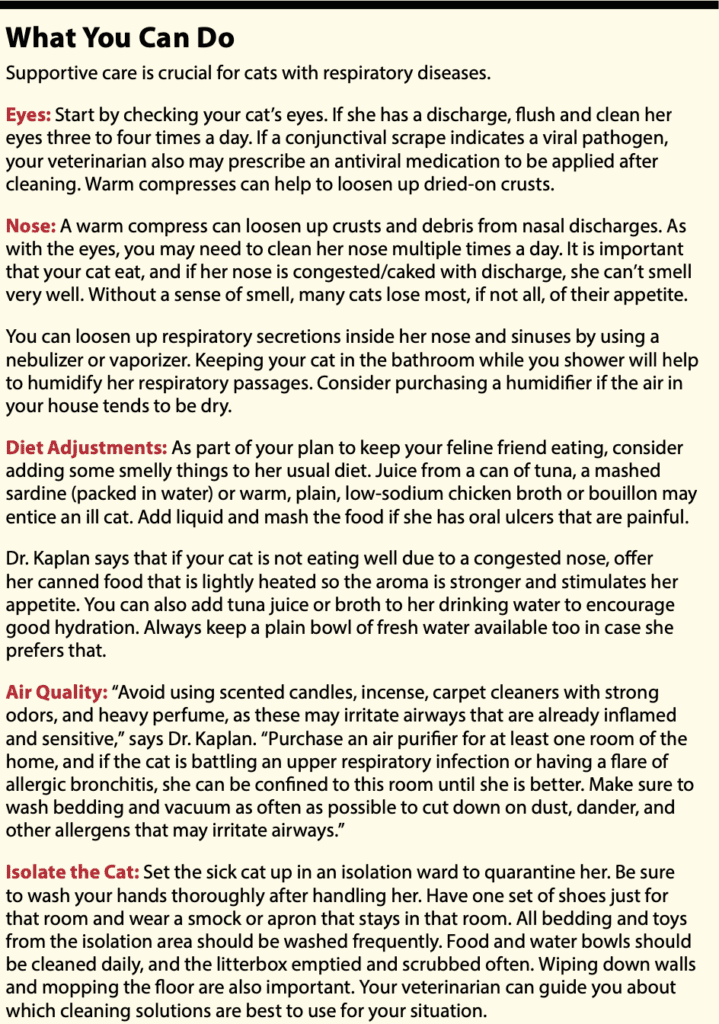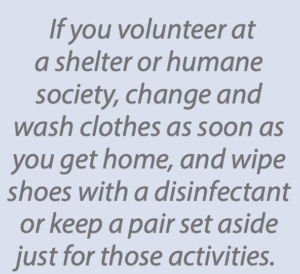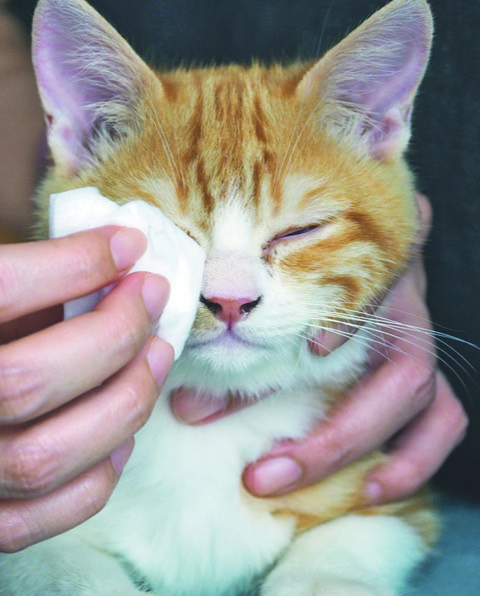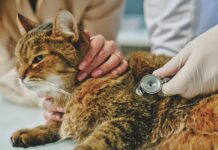Respiratory problems in cats can range from minor annoyances to life-threatening emergencies.
Signs of respiratory illness in cats can range from an occasional sniffle or sneeze to labored breathing and heavy nasal discharge. Cats don’t tend to cough as much as dogs with respiratory disease do. As with everything else, they are more subtle.
“The most common problem we see is upper respiratory infection. These cats typically have runny eyes, nose (either clear or mucoid discharge), sneezing, and are often lethargic with a waxing and waning fever. Most of these infections are viral in origin, but can develop a secondary bacterial infection,” says Leni Kaplan, DVM, senior lecturer, section of community practice service, Cornell University’s College of Veterinary Medicine.
“We also see asthma, also known as allergic bronchitis; and most of the time, there is a seasonal component to this condition. Every now and again we see cats with lungworm, which we treat empirically, and they usually get better, or we diagnose it via fecal sample,” says Dr. Kaplan.
Clinical Signs
In mild cases, you might notice red and inflamed eyes with clear or pus-like discharge. Along with that, your cat may be quieter than normal and not have her usual appetite. Cats rely heavily on their sense of smell for eating, and not being able to smell her food well may decrease her appetite. She may have some nasal discharge. With some of the viral causes of respiratory problems, you may notice that your cat is drooling more than usual due to ulcers or inflammation in the mouth. Sneezing is more common than coughing. (Note: Hacking up a hairball can sound like a respiratory cough.)
The respiratory rate may be increased. Normal respiratory rate in cats is 15 to 30 breaths per minute, and anything over 35 breaths per minute (while at rest or sleeping) should prompt immediate veterinary consultation. If your cat has a fever (normal temperature for a cat is 100.5°F to 102.5°F), she will usually be lethargic.
With more severe respiratory illness, your cat’s respiratory rate will usually rise above normal, and her activity level will drop dramatically. She may hide, and you may notice purulent discharge (greenish to yellowish, pus-like) from her nose. She may have a fever, may sneeze and/or cough and may not want to eat at all. In severe respiratory distress, your cat may open-mouth breathe. This is a serious clinical sign that warrants immediate veterinary consultation.
Diagnosing Respiratory Illness
For mild cases, and with a limited number of cats involved, supportive care is often sufficient, and determining the cause may not be that important. Many feline upper respiratory infections tend to be self-limiting, particularly if a cat is appropriately vaccinated. Most affected cats will recover with simple supportive care in five to 10 days. For a cattery or shelter situation, more diagnostics may be merited, especially if some cats become very ill.
Scrapings of the conjunctiva of the eyes can identify some pathogens. Cells collected from the nose or mouth may be helpful, too. In these cases, your veterinarian will examine stained cells to look for organisms, and samples can be sent for viral culture and PCR-based (DNA) testing if necessary. If the upper respiratory illness progresses to pneumonia, radiographs may be taken and a transtracheal wash done to try to identify the causative agent(s). Often, a diagnosis is based on the clinical signs, and empirical treatment may be instituted without a specific diagnosis.
Treatment
Not surprisingly, treatment depends on the cause of the illness. Antibiotics are important if bacterial infections, including pneumonia, develop, and secondary bacterial infections are common with viral respiratory diseases of cats. Your veterinarian may go with the empirical antibiotic choice based on experience or do a culture and sensitivity, although this is more commonly done if your cat does not respond to the first choice. Consider adding a probiotic to your cat’s food if she is taking an antibiotic.
Some new antivirals (both systemic and ocular) can be used in cats to help fight viral infections. These can be expensive but may hasten recovery, especially in cats at greatest risk.
For cats diagnosed with feline asthma, a common feline problem, inhalers that deliver corticosteroids and/or bronchodilators to the lungs are now available. Your cat may need some convincing to become comfortable with an inhaler, but it can be an ideal way to deliver medications directly to where they are needed, and most cats can be acclimated to accepting this valuable way of delivering respiratory therapy.
Some cats may need nutritional support if they aren’t eating to avoid the development of hepatic lipidosis. This may be as simple as an appetite stimulant such as mirtazapine, which can be used transdermally or orally, or as complicated as placement of a feeding tube. Either way, it is important to get nutrients into your sick cat promptly if she is not eating.

Hydration is especially important for cats with respiratory problems. Along with normal hydration requirements, fluids help to keep respiratory secretions liquid, so they are easier to cough or sneeze out. Your veterinarian or a veterinary technician can show you how to give subcutaneous fluids at home for a hydration boost.
Cats who are in severe respiratory distress require hospitalization. At the hospital, they can be placed in an oxygen-enriched environment and can be given medications and fluids intravenously, avoiding the stress of giving pills and injections.
Prevention
Vaccinations are key in the prevention of respiratory illnesses in cats. While they  may not totally prevent illness, vaccinated cats tend to have milder symptoms and faster recovery times from common viral respiratory infections. Indoor-only cats are less exposed to respiratory pathogens (i.e., viruses and parasites) and harmful environmental influences, such as the wildfire smoke that has plagued much of North America recently.
may not totally prevent illness, vaccinated cats tend to have milder symptoms and faster recovery times from common viral respiratory infections. Indoor-only cats are less exposed to respiratory pathogens (i.e., viruses and parasites) and harmful environmental influences, such as the wildfire smoke that has plagued much of North America recently.
If you foster cats, set up a quarantine room for them to prevent them from potentially passing respiratory and other infectious diseases to any other cats that you may have in your home. Consult with your veterinarian about how best to manage such quarantines.
If you volunteer at a shelter or humane society, change and wash clothes as soon as you get home, and wipe shoes with a disinfectant or keep a pair set aside just for those activities. Practice good hygiene by washing your hands before interacting with any cats in your home after being at the shelter.




